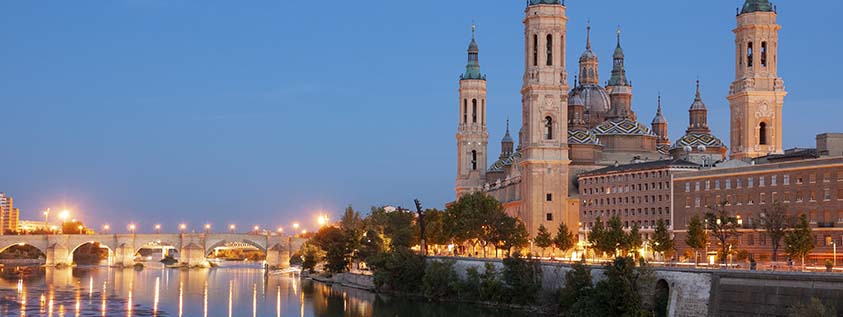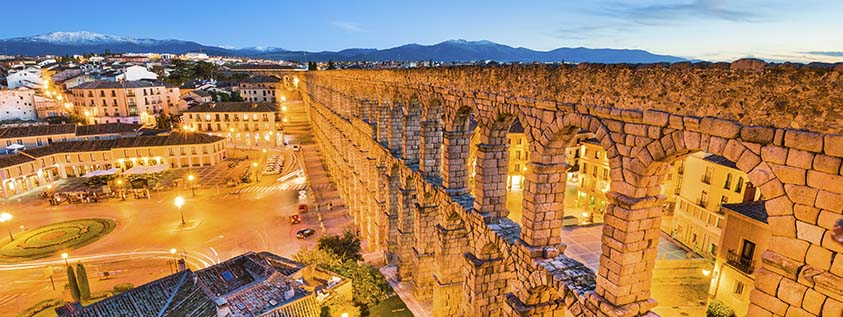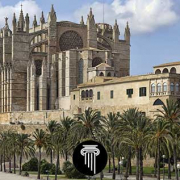14 Myths about Spain: The Misconceptions Discussed
When you want to move to Spain for retirement, go on holiday, or buy a holiday home, it is helpful to be aware of the most common myths about this country. Understanding the Spanish culture will help avoid problems and make you blend in nicely.
Content
Myth 1 – Spain is full of Flamenco dancers
This is one of the most common myths about Spain. There are only a few places in the country to see people dancing flamenco. Next to this, the flamenco dance isn’t easy; it takes years to learn.
Flamenco is a form of Spanish dancing and music. Initially, they created the flamenco without music; it consisted only of “Palmas” clapping and song. Currently, flamenco consists of three elements: dance (“Baile”), guitar playing (“Guitarra”), and singing (“Cante). Flamenco was influenced by foreign culture, predominantly Latin America (e.g. Mayan and Aztecs). The golden age of flamenco is usually considered the period between roughly 1780 and 1845.
Myth 2 – Getting a job in Spain is impossible
Spain’s unemployment rate is high against other countries in Europe, and getting a job in Spain can indeed be hard, especially if you are inexperienced and living in a village. Most job opportunities seem to be in the bigger cities. In the big cities, start-up businesses are booming more and more, and Spaniards are spending money.
There’s a high demand for qualified labour, which is why it’s possible to find a job in Spain if you have the right qualifications. There are a great number of jobs in tourism and hospitality, but having a good level of English is necessary to get the job. The job market is also growing in IT, customer service, engineering, construction, teaching, and health care.
Working in Spain is also very attractive to foreigners because salaries are usually higher for them, and living costs are also low in Spain. Remote working is also increasingly popular in Spain, but this requires some additional planning with your employer.
The minimum wage has been increasing rapidly in Spain but is lower than in northern European countries. However, lower living costs make it possible to have a comfortable life with the minimum wage.
Myth 3 – Spaniards eat lots of oranges
The oranges are the most popular fruit that Spain exports and this makes many foreign people believe that most of the Spanish food is based on oranges.
Oranges are very common in Spain, and especially Seville is a commonplace to grow oranges. The environmental characteristics make excellent conditions for the citrus fruits to grow, and the sunny weather and the soil where the fruits are grown make them very tasty. In Seville, you can even pluck them from over the 10.000 trees in the streets. However, most of these oranges are not meant for eating purposes but for processing juice.
However, the Spaniards do not eat more oranges than in other countries. The United States, Mexico, India, and China eat more oranges per capita. People love the oranges and other citrus fruits that come from Spain; citrus fruit is the 10th most exported product of Spain.
Myth 4 – Spaniards have bullfights all the time
A controversial subject in Spain is bullfights. Bullfights, in many cases, consist of inserting barbed darts into the bull until it is exhausted or weakened enough to be killed. Many foreigners believe that this is an everyday activity among all Spaniards because it is well-known abroad. In reality, bullfights are very controversial and could even be forbidden depending on the area you are in (e.g. Catalonia).
According to a national poll, 65 per cent of Spaniards are interested in bullfighting between zero and two out of ten, and this number is around 75% for younger people. Since the 1980s, there have been a lot of reactions against it and movements trying to get the prohibition lifted.
The bullfight’s origins date back to prehistoric times when men battled wild bulls to show strength and bravery. It’s more common in the south of Spain. Spain’s bullfighting tradition was initially influenced by gladiator games, part of the Roman Empire. The bull-running city is Pamplona and takes place in July; thousands of people run from the bulls.
Myth 5 – Spaniards don’t eat vegetables
A stereotype of Spanish people is that they don’t eat many vegetables and eat a lot of meat instead. Some people say that tobacco is the “only Spanish vegetable you need”. Vegetables are less commonly cooked in Spanish meals than in other countries. Peppers, artichokes, eggplant, spinach, and other vegetables are not often eaten together with the main dish, which contrasts with the Italian and French cuisine.
Spanish vegetable dishes include Tortilla de Patatas (Spanish omelette) or Sopa de Espárragos (Asparagus soup), Ensalada Mixta (mixed salad), Pisto (Spanish Vegetable Stew), Escalivada (roasted eggplant, bell peppers). Indeed, vegetables are not included in many traditional dishes, but this has been changing over the past few years as people have become more health-conscious and vegetarian. Vegetables are also commonly served separated from the main course, for example, in the form of a tapa.
Myth 6 – Spaniards don’t celebrate Christmas
Spaniards do celebrate Christmas but different than in Anglo-Saxon countries. Spaniards call Christmas “Navidad”, but traditionally it doesn’t include Papa Noël (Santa Claus) coming to town in December. However, the gift-giver is becoming more popular. This is caused by Spanish people trying to mix cultures and traditions from other countries. Currently, most families have both gifts on December 25th, and January 6th.
Instead of Saint Nicholas, they commemorate “Los Reyes Magos” (The Three Wise Men). Every January 6th, the Three Wise Men come and leave presents under the Christmas tree for youngsters. Every Spanish village and city honours the three kings on January 5th, when they descend the streets in a grand parade called “Cabalgata”.
Another tradition is the Portal de Belén, a typical catholic Christmas decoration of the nativity scene. Next to this, there’s a special dish called “Roscón de Reyes, which is eaten around December 24th; it consists of a small round of sweet bread full of whipped cream and topped with candied fruits.
Myth 7 – Spanish culture includes Mariachi bands
A mistake of some American tourists is that they expect to see Mariachi bands and sombrero’s in Spain. Well, if you wish this, you will be disappointed; Mariachi bands are found in Mexico.
The four friendly male Mexicans playing their instruments and wearing sombreros and moustaches are not from Spain. If you want to hear the great Mariachi music, you should visit Mexico. While some commercial shops may sell sombreros, this is a businessperson capitalizing on the perhaps ignorant nature of a tourist (and having fun while doing so).
Myth 8 – Siesta time: Spaniards are lazy and unprofessional
The Siesta is when people take a break from work and go home to have lunch with their families before continuing the rest of their day. While maybe a bit more common in the smaller villages, Siestas are not taken in Spain anymore. The Siesta time has become history; not only it’s inconvenient for businesses to close during Siesta, it’s also because of changes in family lifestyles.
Spaniards also work long hours at their jobs; they leave home early in the morning and come back late. Shops are almost always open on Sundays and at night. The Spanish workforce is known for being motivated, hardworking, and productive. This is also why international recruiters like to recruit in Spain.
Myth 9 – Paella is the national dish
If you google “national dish Spain”, you will probably find Paella is the top result. Paella is a rice dish with meat and vegetables, but you can also get it without meat. While Paella is one of the most well known Spanish dishes, it’s not the national dish, and Spaniards consider it a Valencian speciality.
The dish was originally a midday workers meal, cooked over an open fire like a barbecue. It consisted of rice with whatever ingredients were available in the fields. Common ingredients include tomatoes, onions, snails, beans, fish, sea algae, and different meats.
Rather than the Paella, Spaniards see the Tortilla (Spanish Omelet) as much more popular in Spain. This is a potato omelette that you can find at most tapas restaurants.
Myth 10 – Spaniards are all Catholic
While Spanish churches, such as the Sagrada Família, are beautiful and historic. The Catholic Church is not as influential as it once was. Even though many Spaniards were raised Catholic and their families still go to church on holidays and important events, Spain has become a more secular country.
Of the religious Spaniards, most are Catholics (around 20%), and around 35% of them don’t attend mass. Religious freedom is respected, and the Spanish Constitution of 1978 gave up Catholicism as the national religion of Spain while acknowledging its societal importance.
Research in 2015 showed that only 3% of Spaniards consider religion one of their three most important values, lower than the 5% European average.
Myth 11 – Spain is all sunshine
Yes, Spain has lots of sunshine, especially in the south of Spain. Next to this, the sun in Spain can be powerful, especially in the summer months. However, one of the common misconceptions about Spain is that summer is all they know. Most people don’t know that there are freezing months in Spain, and the weather can even be pretty bad. For example, it rains a lot in Madrid, and it gets very cold in the winter.
Next to sunshine, there is also a lot of snow and places to ski in Spain. Places like the Spanish Pyrenees or the Sierra Nevada are perfect for enjoying the snow, and they have many slopes to choose from and a wide range of difficulty levels.
Myth 12 – Spaniards are all brown-skinned
White skin and brown hair are very prevalent in Spain, but not all Spaniards have this type of hair and skin. Spaniards have a very mixed heritage, and many Spaniards also have a more typical northern European look with blonde hair and blue eyes.
Spanish heritage comes from the Moors, Germanic Tribes, Romans, and the Celts. You can find all these types of people in Spain and make a mix of everything over time.
British and African immigration has also caused many people to influence the population’s appearance. The Spanish population is diverse, with different skin colours and features that may be more or less common depending on which part of the country you go to.
Myth 13 – Spanish food is spicy
Another common mistake people make is that they think Spanish food is spicy. That might be because in some parts of Spain, like Andalusia and Extremadura, they eat chorizo, and this is a kind of spicy sausage made with meats and spices.
But Spanish food isn’t as spicy as Indian, Mexican or Thai food. In Spain, there is food such as Gazpacho, Patatas Bravas, Spanish omelette, and various tapas. They are delicious but not spicy.
Myth 14 – Spanish people drink lots of Sangria
A common misconception about Spanish culture is that Spaniards drink lots of Sangria. The truth is they do drink it, but not as much as you might think. Sangria is a traditional drink of Spain and Portugal, but it’s not very common. Sangria is red wine, fruit (lemon or orange), spices, and alcohol mixed.
The Romans established themselves on the Iberian Peninsula around 200 BC, and they planted a lot of grapes to produce wine. As a result, the Spanish people drank wine as part of their everyday lives and made it their own by adding spices. They added alcohol to fortify the wine and disinfect it in some cases.
In the present day, the truth is that Spanish people usually drink regular red or white wine like people do worldwide, and most young people don’t drink Sangria at all, and they more than likely drink Tinto de Verano instead. Tinto de Verano originated in Cordoba, Spain and is made of red wine, soda, and lemonade.
When Spanish people drink Sangria, they drink it during the summer, and they usually make their own. While you might come across as a tourist, it is delicious to have Sangria in bars or restaurants during the hot months.
A word from SpainDesk
We hope you enjoyed reading this article on myths about Spain. This article is helpful for when you are planning to visit, live, or retire in Spain. The best way to experience Spain is without any preconceived ideas, and we hope we’ve managed to help you accomplish this by breaking a few common myths.








